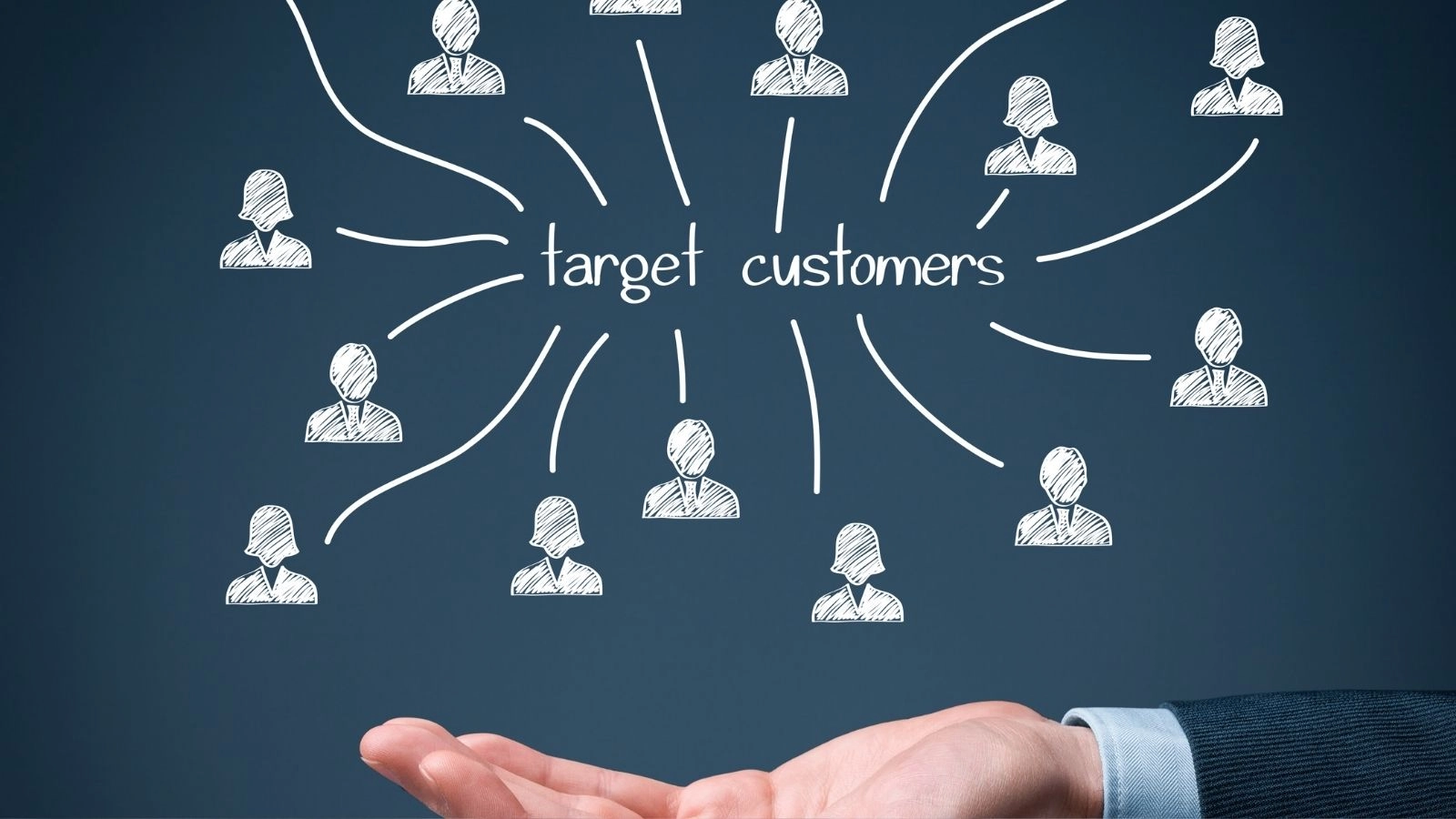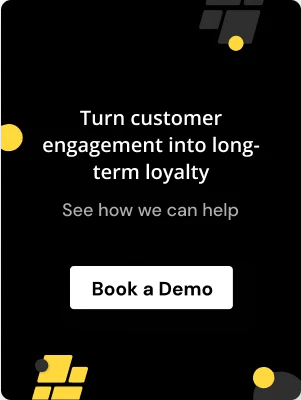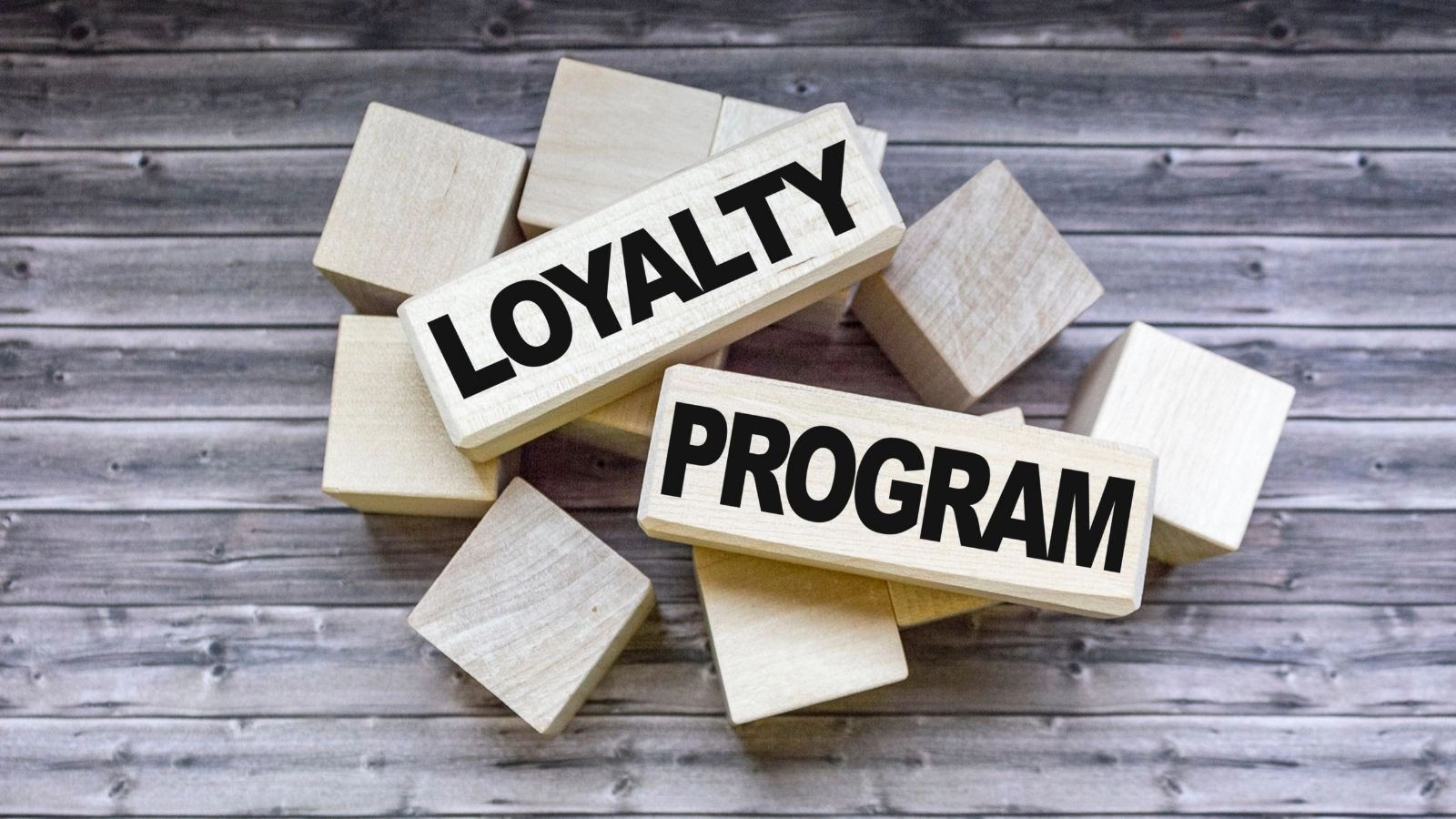.avif)
.avif)
Ever wonder why some brands seem to effortlessly keep customers coming back while others struggle? It's not magic; it's loyalty programs, and they’re a game-changer. With businesses pouring more into acquiring new customers, retaining the ones you've already won has become the smarter investment.
In fact, the global loyalty management market is booming, expected to skyrocket from USD 15.19 billion in 2025 to USD 41.21 billion by 2032. The demand for these programs is a clear sign that businesses are waking up to the power of loyalty.
In this blog, we’ll dive into how digital loyalty platforms can turn your first-time buyers into repeat customers, increasing lifetime value and reducing churn.
Overview
- Loyalty programs drive repeat visits by reducing reliance on customer acquisition costs and boosting customer engagement.
- Personalization and segmentation tailor rewards, creating stronger connections and encouraging repeat purchases.
- Automation and real-time analytics optimize loyalty programs, offering timely and relevant rewards.
- Tiered rewards and gamification motivate customers with clear progress and exciting incentives.
- Cross-platform integration ensures a seamless, consistent loyalty experience across all touchpoints.
How Loyalty Programs Drive Retention and Revenue Growth?
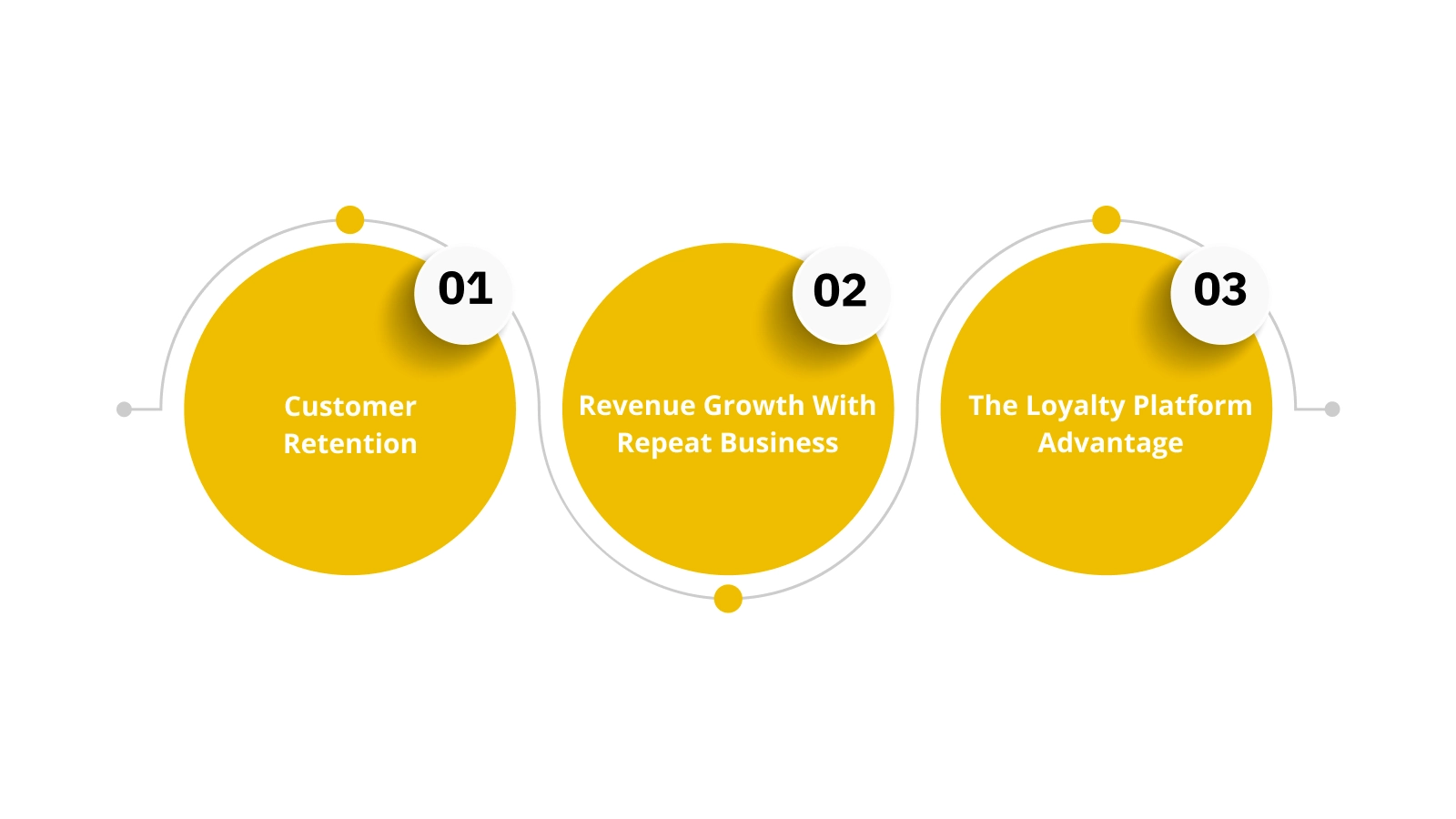
A well-executed loyalty program can drastically improve customer retention and drive repeat visits, which is essential for long-term revenue growth. Let’s explore the impact loyalty programs have on retention and why they are important for your success.
1. Customer Retention
Repeat visits are a powerful tool in reducing the reliance on high-cost customer acquisition strategies. By prioritizing retention and offering tailored rewards, businesses build consistent engagement, ultimately increasing customer lifetime value (CLV) and profit margins through repeat customer spending.
2. Revenue Growth with Repeat Business
Loyalty programs are key drivers of consistent revenue growth. When businesses incentivize repeat purchases, they increase average order value (AOV) and boost CLV. These programs ensure predictable, recurring revenue, allowing businesses to grow with lower marketing costs and improved profitability.
3. The Loyalty Platform Advantage
Digital loyalty platforms like Nector help automate customer engagement and provide personalized rewards. By integrating AI for personalized experiences and optimizing program management, these platforms allow businesses to scale loyalty programs without increasing complexity or requiring more resources.
With these insights into the powerful impact loyalty programs can have on your business, let’s now dive into the key features that make these programs effective in driving repeat visits and boosting long-term customer loyalty.
Also Read: Ugaoo’s 44X ROI with Nector: Referral & Review Program Success

Key Features of an Effective Loyalty Program
Building a loyalty program that drives repeat customer visits requires key features that enhance engagement. Here are the features to look out for:
1. Points-Based Systems
Points-based systems are straightforward and scalable, motivating customers to engage by tying rewards to actions like purchases or reviews. This simplicity makes it easy for customers to track progress, encouraging consistent participation.
2. Tiered Rewards & Gamification
Tiered rewards provide a clear path for progression, motivating customers to reach higher levels. Adding gamification features like progress bars and badges creates excitement, pushing customers to compete for better rewards.
3. Referral Programs
Referral programs turn existing customers into brand advocates by offering rewards for both the referrer and the referee. This builds loyalty while expanding your customer base organically, encouraging repeat visits and trust in the brand.
4. AI-Powered Personalization
AI-powered personalization tailors rewards based on individual customer behavior, ensuring offers are relevant and timely. By analyzing customer data, businesses can increase engagement, encouraging repeat visits and supporting long-term loyalty with tailored incentives.
5. Cross-Platform Integration
Cross-platform integration allows seamless management of loyalty programs across websites, apps, and social media. With tools like Nector, businesses can unify customer experiences, boosting engagement and driving repeat visits with minimal friction.
Overall, implementing these key features creates a loyalty program that not only attracts but keeps customers coming back.
Why Understanding the Behavior of Repeat Customers Matters?
Understanding the behavior of repeat customers is essential for designing effective loyalty programs. As repeat customers spend 67% more compared to new customers, they offer a valuable opportunity for sustained profit. By analyzing their actions and preferences, businesses can implement strategies that drive continued engagement and encourage frequent visits.
1. Segmentation for Personalization
Segmentation helps businesses customize rewards based on customer behavior and purchasing patterns. By grouping customers into categories like frequent buyers, seasonal shoppers, or lapsed customers, brands can offer rewards that feel more relevant.
For example, Customer A, who makes frequent purchases, receives VIP offers, while Customer B, a seasonal shopper, gets exclusive seasonal discounts. This approach strengthens customer relationships and encourages repeat visits by providing rewards that align with their unique preferences.
2. Predictive Analytics for Customer Retention
Predictive analytics uses customer data to predict behavior, like when a customer might stop buying. By looking at things like how often they purchase or engage, brands can act early with personalized offers to keep them interested.
This proactive approach helps businesses keep customers coming back with relevant rewards, even when engagement starts to dip.
With these insights into customer behavior, businesses can now implement specific strategies to enhance engagement and drive repeat purchases. Let’s explore the actionable tactics that can take your loyalty program to the next level.
Also Read: How to Increase Referral Traffic: 15 Proven Strategies That Actually Work
Effective Strategies to Drive Repeat Purchases with Loyalty Programs
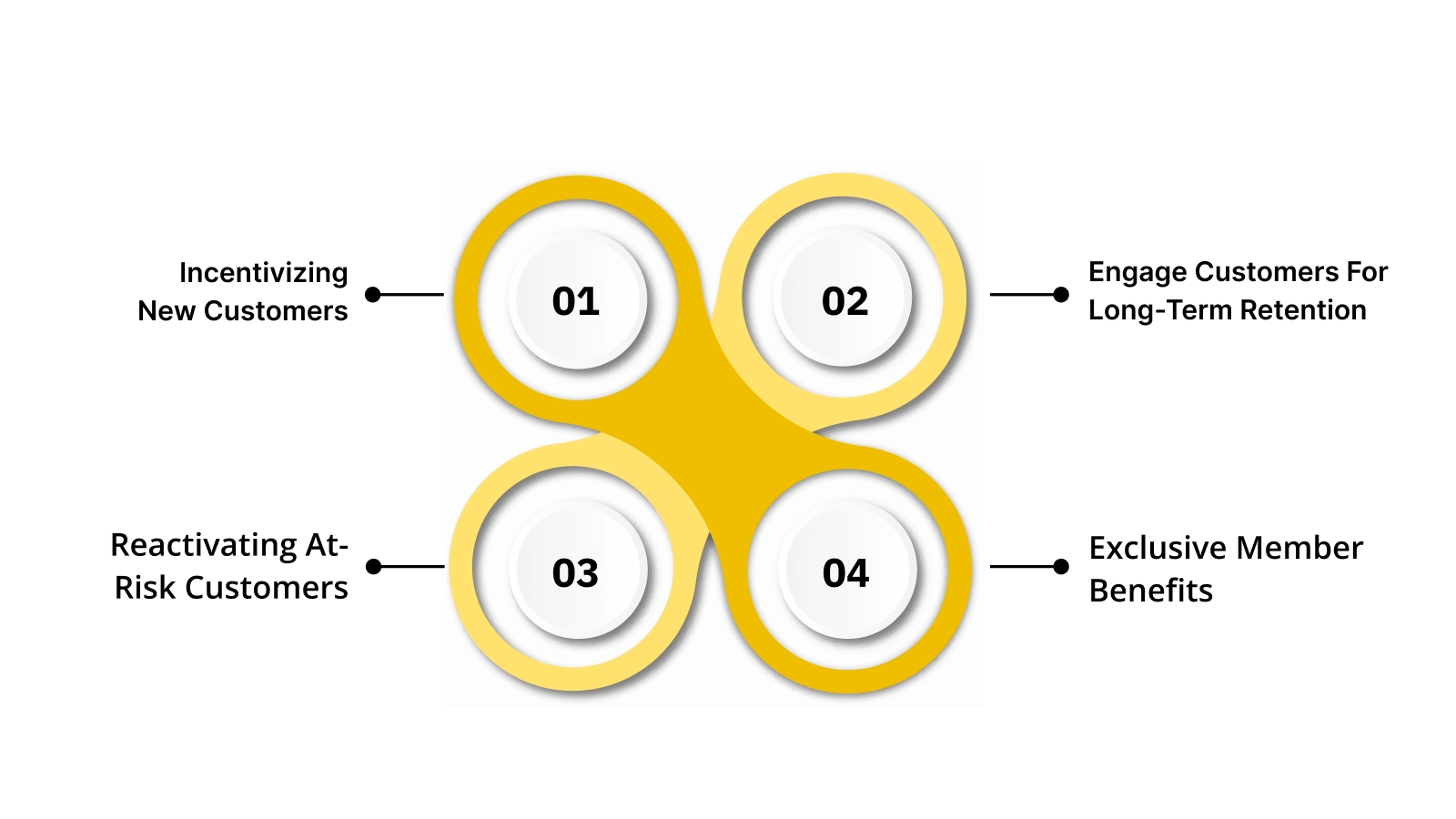
To drive repeat purchases, loyalty programs must be strategically designed to engage customers at every stage. Whether you're converting first-time buyers or reactivating lapsed customers, a targeted approach can make all the difference. Here’s how to do it:
1. Incentivizing New Customers
To ensure first-time customers return, businesses must offer immediate value. Personalized onboarding rewards, like discounts or points on their next purchase, create a positive initial experience, leading to stronger engagement and repeat visits.
How to achieve this:
- Offer discounts or points on the next purchase to incentivize return visits.
- Personalize the initial experience based on customer preferences or past behavior.
- Send a thank-you message with reward details immediately after the first purchase.
2. Engaging Existing Customers for Long-Term Retention
Long-term engagement involves maintaining interest from customers who have made multiple purchases. Offering tiered rewards based on purchase frequency keeps them motivated, while regular follow-ups and tailored offers encourage continued loyalty.
How to achieve this:
- Implement tiered rewards based on customer activity to encourage frequent visits.
- Automate follow-up emails with tailored offers to drive repeat purchases.
- Highlight new products or offers relevant to their past behavior to keep engagement high.
3. Reactivating At-Risk Customers
Re-engaging customers who haven’t interacted in a while is also important. Time-sensitive incentives, like limited-time discounts or bonus points, help rekindle interest, prompting these customers to revisit and complete abandoned purchases.
How to achieve this:
- Send exclusive, time-limited offers to at-risk customers to encourage immediate action.
- Use email or SMS reminders about available rewards to prompt re-engagement.
- Offer personalized deals based on their past interactions to make the incentive more compelling.
4. Exclusive Member Benefits
Offering exclusive rewards, such as VIP discounts, early access to products, or special events, builds a sense of exclusivity. This makes loyal customers feel valued and encourages them to stay engaged with the brand.
How to achieve this:
- Create VIP or exclusive member tiers with special benefits like early access.
- Offer members-only discounts or special promotions for frequent buyers.
- Provide exclusive experiences (such as private events) to deepen emotional connection with your brand.
Implementing these strategies will lay the foundation for sustained customer loyalty. But to take your program to the next level, data and automation will be essential in maximizing engagement and driving repeat visits at scale. Let’s dive into how both data and automation can optimize your loyalty efforts.
Data and Automation for Seamless Engagement
Data and automation are key to maximizing customer engagement and ensuring repeat visits. Here’s how they can be of great value:
- Automated reward notifications keep customers informed when they reach milestones or earn rewards, prompting them to redeem points and complete purchases.
- This real-time interaction boosts engagement by offering timely, relevant incentives.
- Next, behavior-triggered engagement uses customer actions to drive specific responses, such as sending reminders for abandoned carts or exclusive offers.
- Combined with tracking and analytics, businesses can continuously optimize their loyalty programs, fine-tuning rewards and strategies to encourage repeat visits and enhance overall program effectiveness.
However, that's not all! With data and automation comes technology, which should be used effectively while you plan a loyalty program.
The Role of Technology in Loyalty Programs
Technology plays an important role in modern loyalty programs, with AI-driven personalization leading the charge. By using customer behavior and transactional data, AI tailors rewards and communications to individual preferences, ensuring that every interaction feels relevant and timely.
This level of personalization boosts customer engagement, strengthens relationships, and drives repeat visits by offering customers exactly what they want and when they want it.
Equally important, real-time analytics lets businesses continuously track performance and adjust strategies based on up-to-date data. Besides, with seamless integration into platforms like Shopify and WooCommerce, loyalty programs become more efficient and simplified, allowing brands to manage customer interactions from a single dashboard. This, in turn, maximizes engagement, ensuring consistent repeat visits.
Also Read: 7 Different Loyalty Strategies and Types of Loyalty That Actually Work
Best Practices for Creating an Engaging Loyalty Program
A well-designed loyalty program doesn’t just reward; it engages, motivates, and keeps customers coming back. To achieve this, focus on simplicity, consistency, and creating a dynamic, community-driven experience that customers will be eager to participate in long-term.
1. Simplicity and Clarity
Keep the loyalty program simple to maximize participation. Avoid complex reward structures that confuse customers. Instead, provide clear communication about how they can earn rewards and redeem points easily, ensuring maximum engagement and repeat visits.
2. Regular Updates & Fresh Rewards
Regularly updating rewards keeps the program exciting. Offering new challenges or changing incentives ensures that customers stay engaged and continue to visit. Fresh rewards create a dynamic experience, ensuring customers stay motivated to interact with the brand.
3. Creating a Community Feeling
Encourage customers to share their achievements or reward milestones on social media. Building a community around the loyalty program increases brand visibility and encourages repeat visits through social proof, making customers feel part of something bigger.
While best practices lay the foundation for a successful loyalty program, overcoming the challenges that arise during implementation is key to long-term success. Let’s now explore the common obstacles businesses face and how to address them effectively.
Common Pitfalls in Loyalty Programs and How to Avoid Them

Loyalty programs have the potential to drive significant engagement, but poorly executed ones can easily backfire. Avoiding common pitfalls ensures your program delivers real value, keeping customers motivated to return.
1. Overcomplicating the Program
A complex loyalty program with too many rules or reward tiers can confuse customers and discourage participation. If customers have to think too much about how the program works, they’re less likely to engage, diminishing its effectiveness.
How to solve this:
- Simplify your reward structures.
- Limit the number of tiers and options.
- Make the user experience intuitive and easy to navigate.
2. Lack of Consistency in Rewards
Inconsistent or underwhelming rewards can frustrate customers, causing them to disengage. When the rewards don’t align with the effort customers put into the program, they lose motivation to participate. Inconsistent reward structures also create confusion about how customers earn and redeem rewards, undermining the program’s effectiveness.
How to solve this:
- Keep reward structures consistent and predictable.
- Offer rewards that match the effort and value customers expect.
- Regularly evaluate rewards to ensure they remain relevant.
3. Neglecting Program Maintenance
Neglecting regular updates and evaluations makes your loyalty program feel stagnant and outdated. Over time, customer needs and behaviors change, and without regular adjustments, the program becomes irrelevant. Failing to introduce new rewards or promotions can result in disengagement, as customers stop seeing value in participating.
How to solve this:
- Regularly update rewards and program features.
- Monitor performance data to track engagement.
- Actively incorporate customer feedback for continuous improvement.
By addressing these pitfalls head-on and consistently refining your program, you ensure that your loyalty efforts continue to drive meaningful results.

How Nector Can Optimize Your Loyalty Strategy?
Nector simplifies customer retention by offering an all-in-one loyalty platform that automates, personalizes, and scales with your business while increasing repeat visits. Whether you're just starting out or scaling rapidly, Nector helps you create a seamless, engaging loyalty experience that keeps customers coming back.
Key features include:
- Effortless Integration: Nector integrates seamlessly with platforms like Shopify, automating processes such as reward tracking and customer engagement with minimal setup.
- Scalable for Growth: Nector adapts as your business grows, accommodating larger customer bases and more complex loyalty features without added complexity or cost.
- Customizable Rewards: Create personalized rewards that align with your brand’s goals, offering flexibility with discounts, exclusive products, or bonus point structures.
- AI-Powered Personalization: Nector uses AI to offer personalized rewards, analyzing customer behavior to ensure timely, relevant incentives that drive repeat visits.
With Nector, you can easily build and manage a powerful loyalty program that scales with your business.
Conclusion
Loyalty programs are essential for driving repeat visits and building long-term engagement. By utilizing personalized rewards, data insights, and automation, businesses can reduce churn and significantly increase customer lifetime value.
Nector makes this process effortless, offering automated loyalty management, AI-driven personalization, and seamless scalability as your business grows. With seamless integration into your existing systems, Nector enables you to create a loyalty experience tailored to your brand, keeping customers engaged and coming back for more.
So, are you ready to drive repeat visits to your site? Start your free trial with Nector today and experience how easy it is to drive long-term loyalty.
FAQs
1. What are some examples of things you can do to increase customer loyalty?
To increase customer loyalty, offer personalized rewards, implement tiered loyalty programs, and engage customers with exclusive offers. You could also encourage referrals and consistently provide exceptional customer service to build long-lasting relationships.
2. What are the most innovative customer loyalty program strategies to help succeed at customer retention?
Innovative strategies include AI-powered personalization, gamified loyalty tiers, seamless cross-platform integration, behavior-triggered rewards, and incorporating real-time analytics to optimize rewards and enhance customer engagement for sustained loyalty.
3. How do loyalty programs help businesses stand out in front of other brands?
Loyalty programs help businesses differentiate themselves by offering unique, tailored rewards that cater to customer preferences. They create emotional connections, encourage repeat visits, and generate word-of-mouth, helping brands stand out and support long-term customer loyalty.
4. What role do exclusive benefits play in a successful loyalty program?
Exclusive benefits, such as VIP access, early product launches, or members-only discounts, create a sense of belonging. This exclusivity enhances customer loyalty by making them feel valued and appreciated, which increases their likelihood of continued engagement with the brand.
FAQs
Start Building Customer Retention That Lasts



